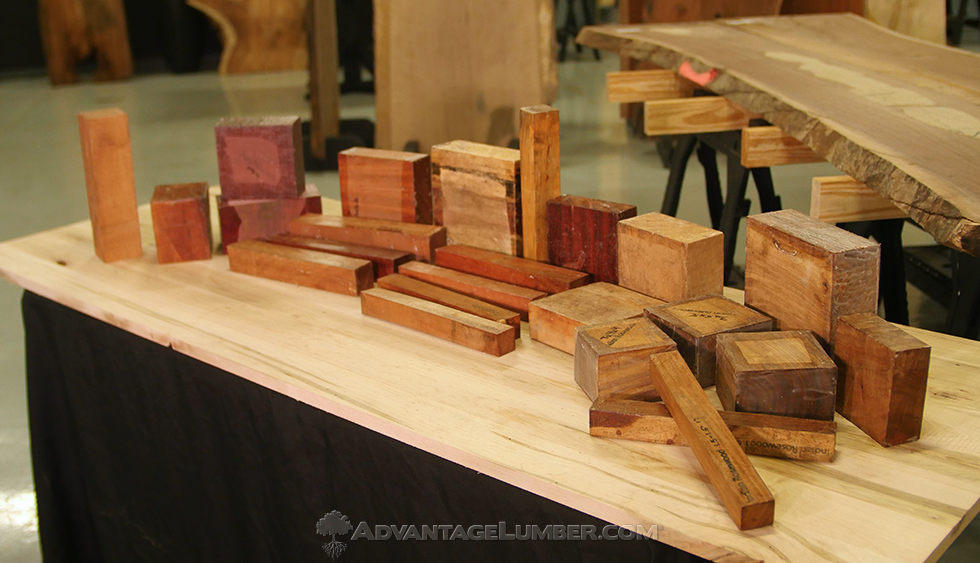- Scientific Name
- Erythroxylum spp. and Simira spp.
- Common Name(s)
- Redheart, Chakte Kok
- Distribution
- Southern Mexico to southern Brazil and Paraguay
- Average Dried Weight
- 40 lbs/ft3 (640 kg/m3)
- Specific Gravity
- Basic: .52, 12% MC: .64
- Janka Hardness
- 1,210 lbf (5,380 N)
- Modulus of Rupture
- 14,320 lbf/in2 (98.7 MPa)
- Elastic Modulus
- 1,497,000 lbf/in2 (10.32 GPa)
- Crushing Strength
- 6,690 lbf/in2 (46.2 MPa)
- Shrinkage
- Radial: 2.8%, Tangential: 8.2%, Volumetric: 10.6%, T/R Ratio: 2.9
- Appearance
- Aptly named, in some instances freshly surfaced Redheart can be a very bright, watermelon red—though color can vary in intensity and hue from board to board: anywhere from a light orange/pink, (similar to Pink Ivory), to a darker brownish red. In some cases, it can look quite similar to Bloodwood, though usually with a more visible and figured grain pattern. Redheart’s vibrant color quickly fades to a reddish brown in direct sunlight, though this color change can be slowed (but usually not stopped entirely) by using a finish with UV inhibitors, and keeping the wood away from strong lighting.
- Texture
- Grain is usually straight or irregular, with a fine, even texture. Low to medium natural luster. Endgrain: Diffuse-porous; small to very small pores arranged predominantly in radial multiples of 2-5; growth rings indistinct; rays not visible without lens; parenchyma varies by species: sometimes rare or absent, or vasicentric and weakly aliform (winged).
- Rot Resistance
- Laboratory tests have shown Redheart to be moderately durable to attack by decay fungi.
- Workability
- Redheart has good working characteristics, and planes, machines, and sands well. Turns, glues, and finishes well, though a brown color shift is to be expected.
- Odor
- Redheart can have a distinct, rubber-like smell when being worked depending on species.
- Allergies/Toxicity
- Besides the standard health risks associated with any type of wood dust, no further health reactions have been associated with Redheart.
- Pricing/Availability
- Sometimes available as narrow boards, but commonly available as turning squares. Tends to be on the medium to high side for an imported hardwood.
- Sustainability
- This wood species is not listed in the CITES Appendices or on the IUCN Red List of Threatened Species.
- Common Uses
- Turned objects, inlays, veneer, fine furniture, and small specialty wood items.
- Comments
- Commonly called Chakte Kok (with a multitude of variant spellings), this species has been previously placed in the Sickingia genus. Another species that’s also in the Rubiaceæ family is Cosmocalyx spectabilis, which is typically sold interchangeably as Chakte Kok. A third, botanically unrelated wood (Erythroxylaceæ family), which bears an uncanny similarity in nearly every respect to the two other species is Erythroxylum havanense, which is most commonly sold as Redheart. The scans show examples of what is labeled as Redheart (Erythroxylum spp.), while the mechanical data numbers reference the wood referred to as Chakte Kok (Simira genus).


